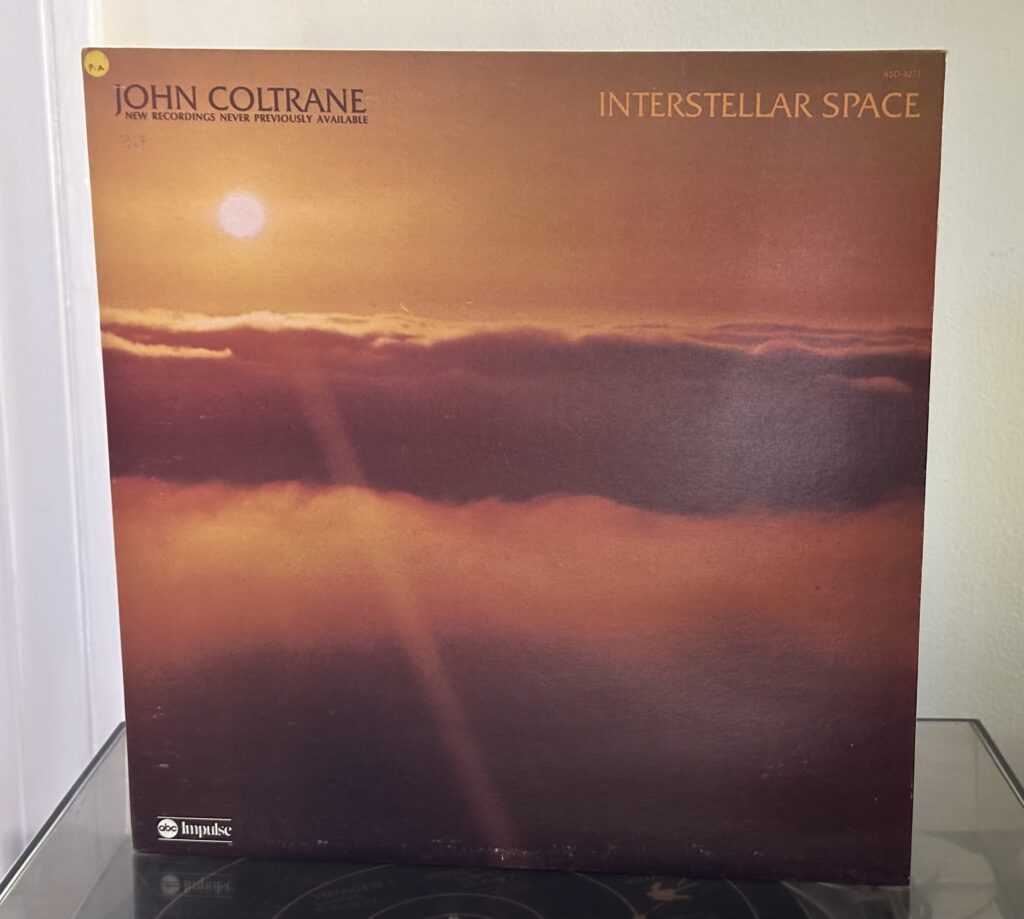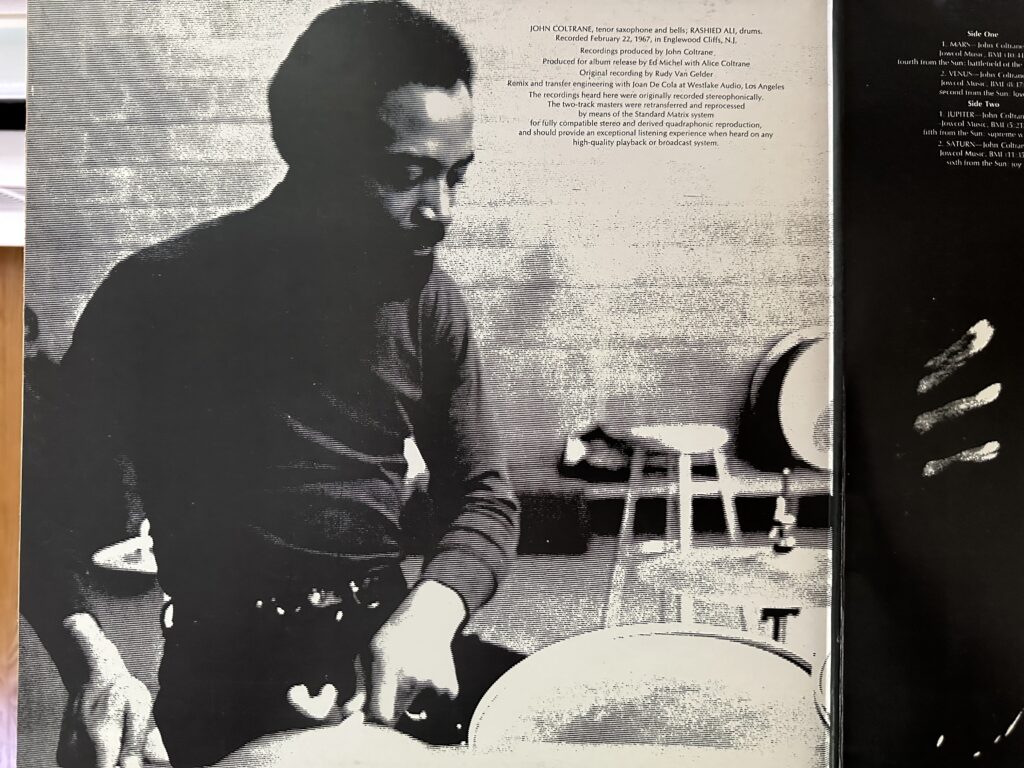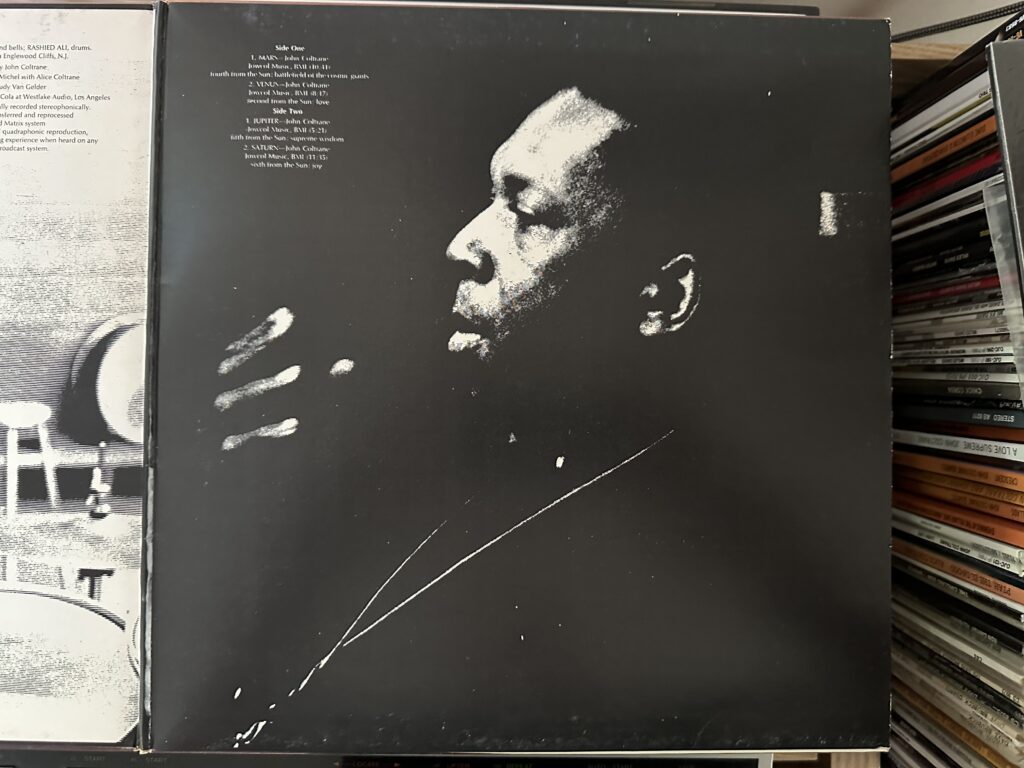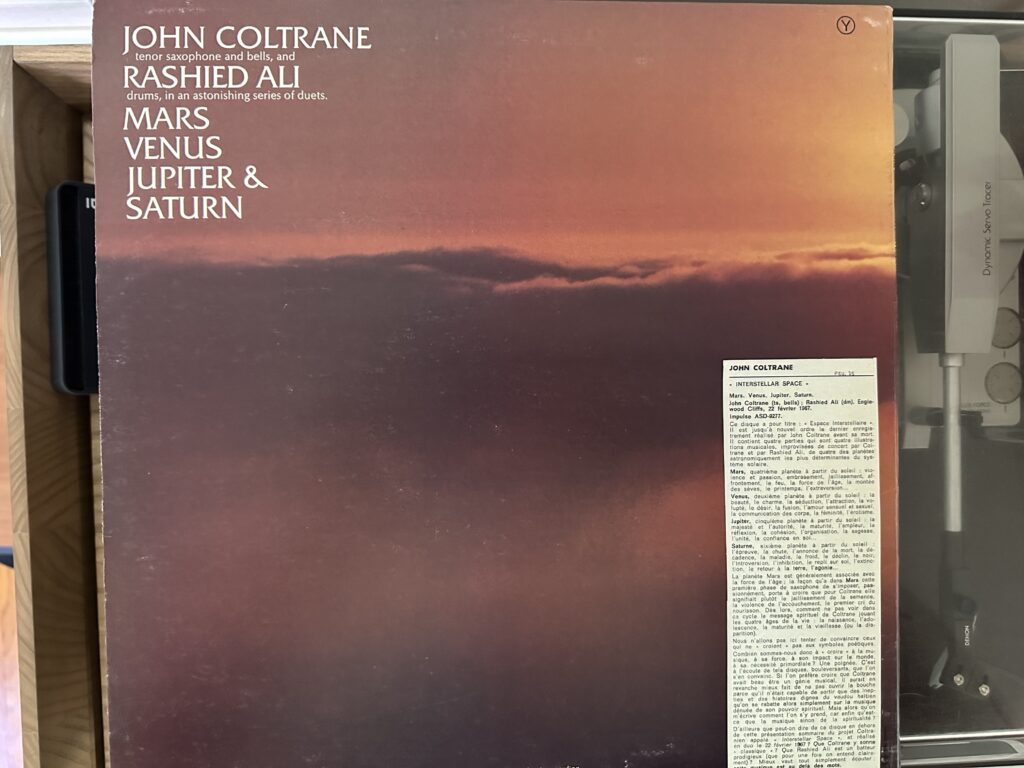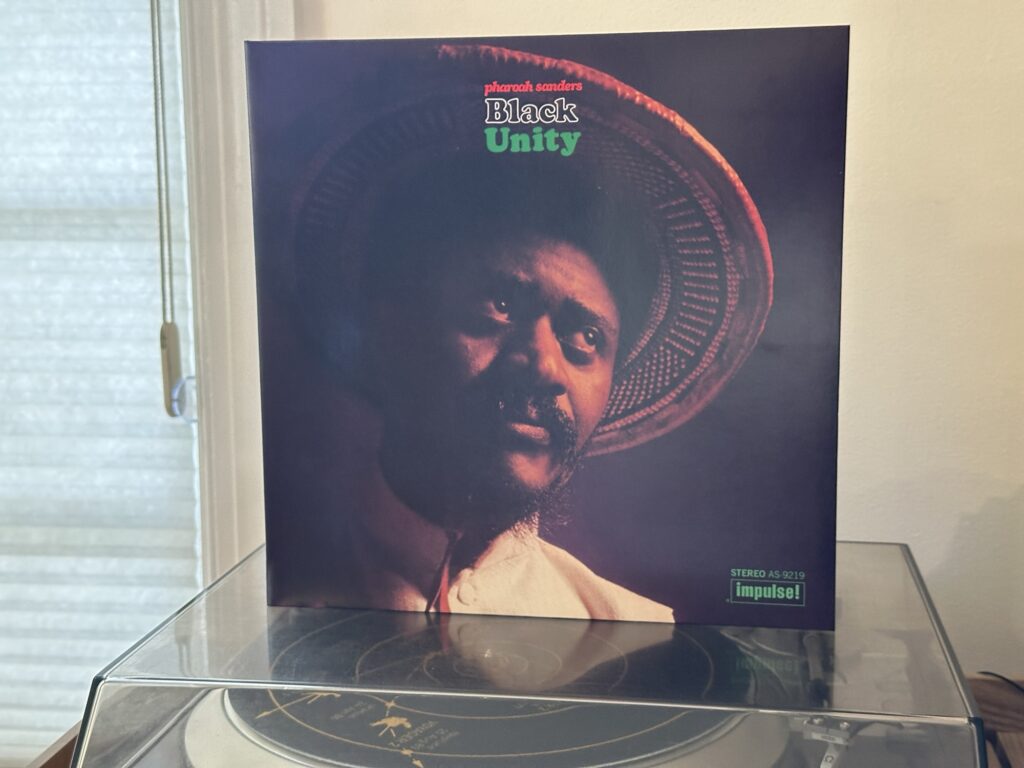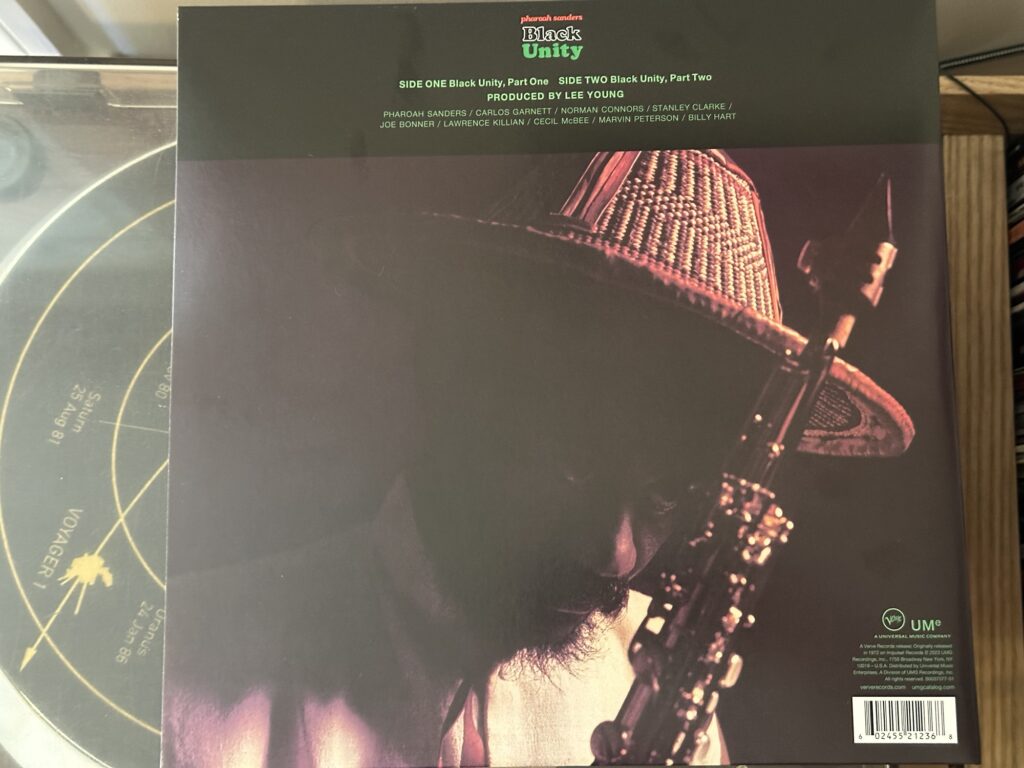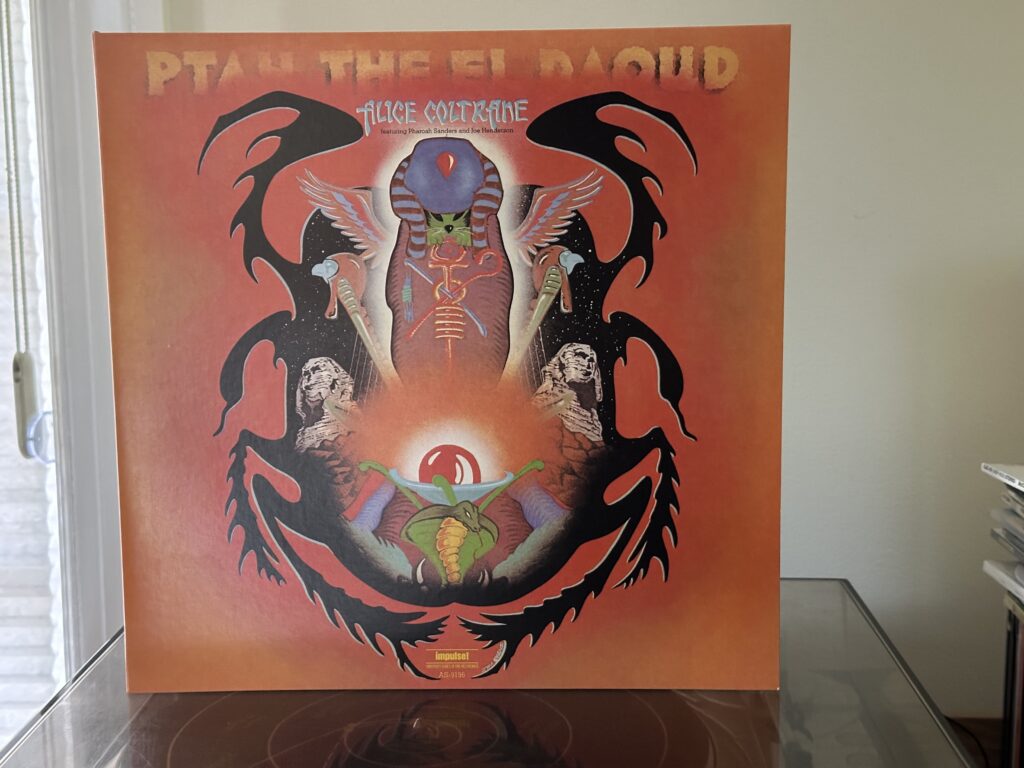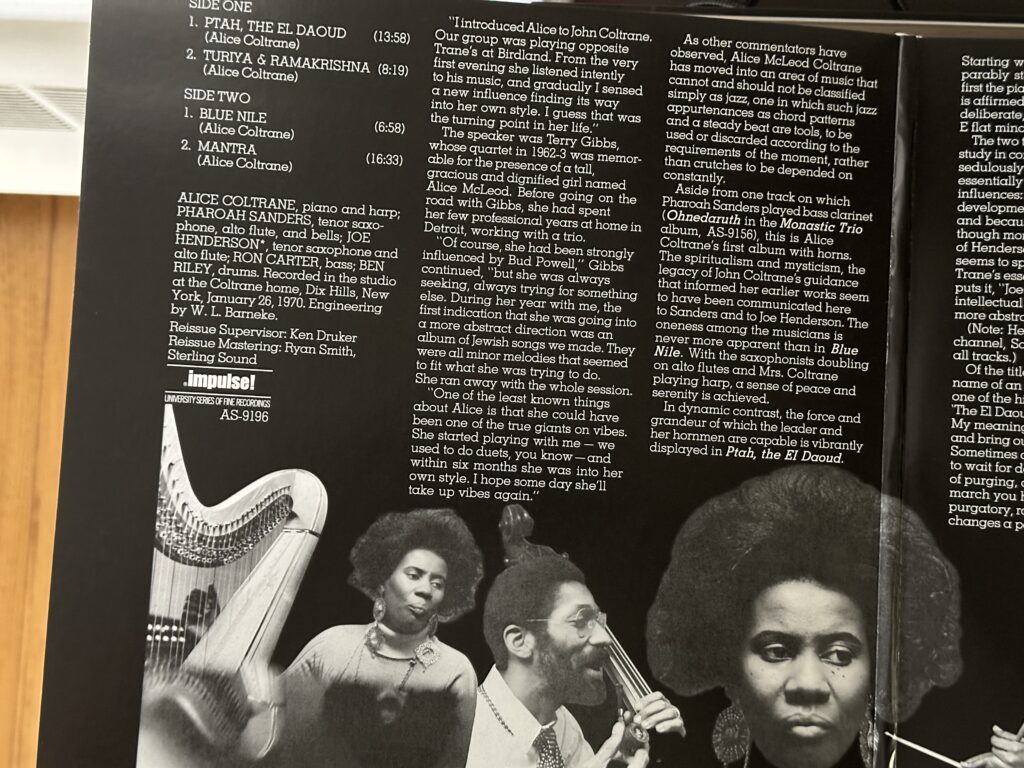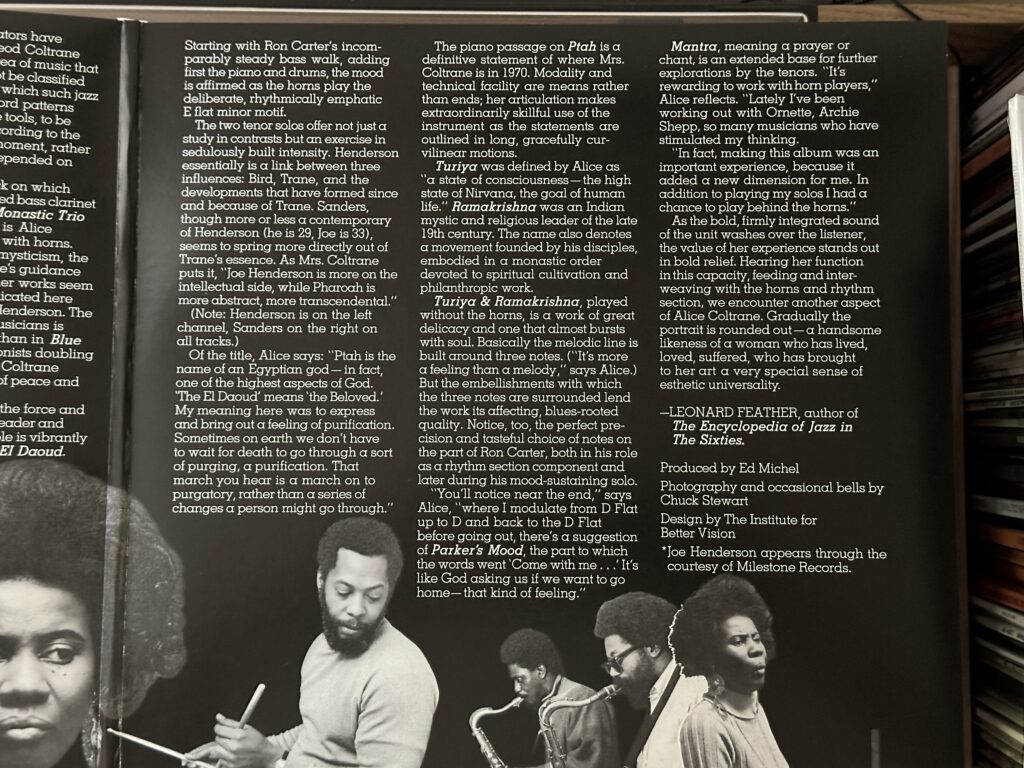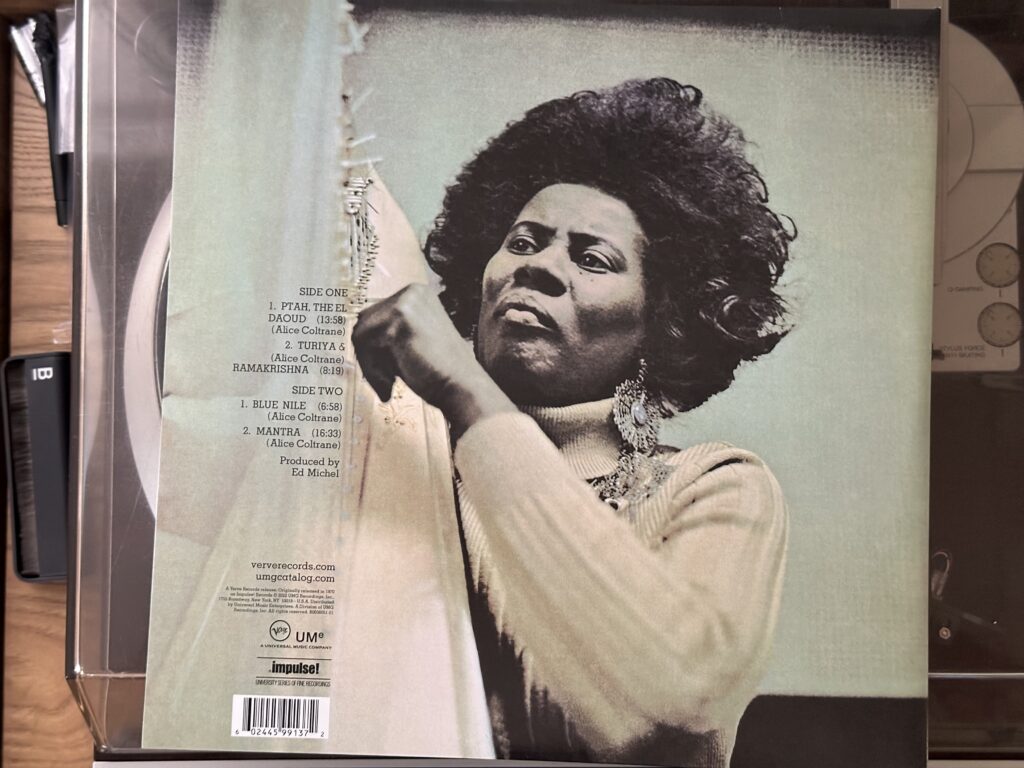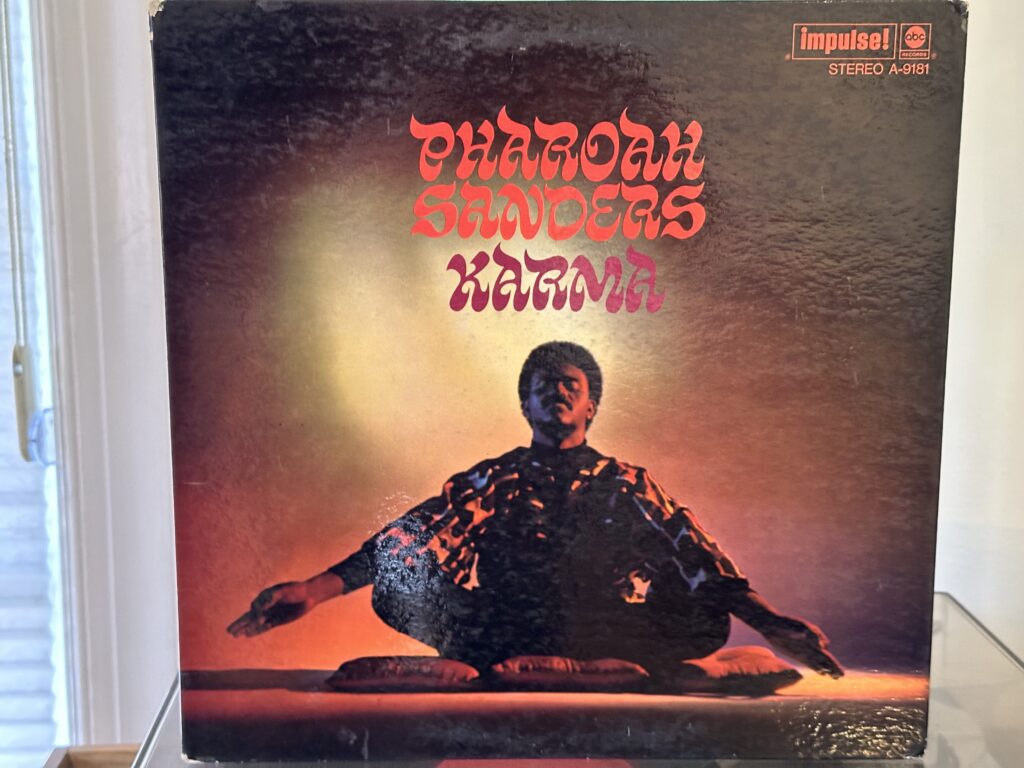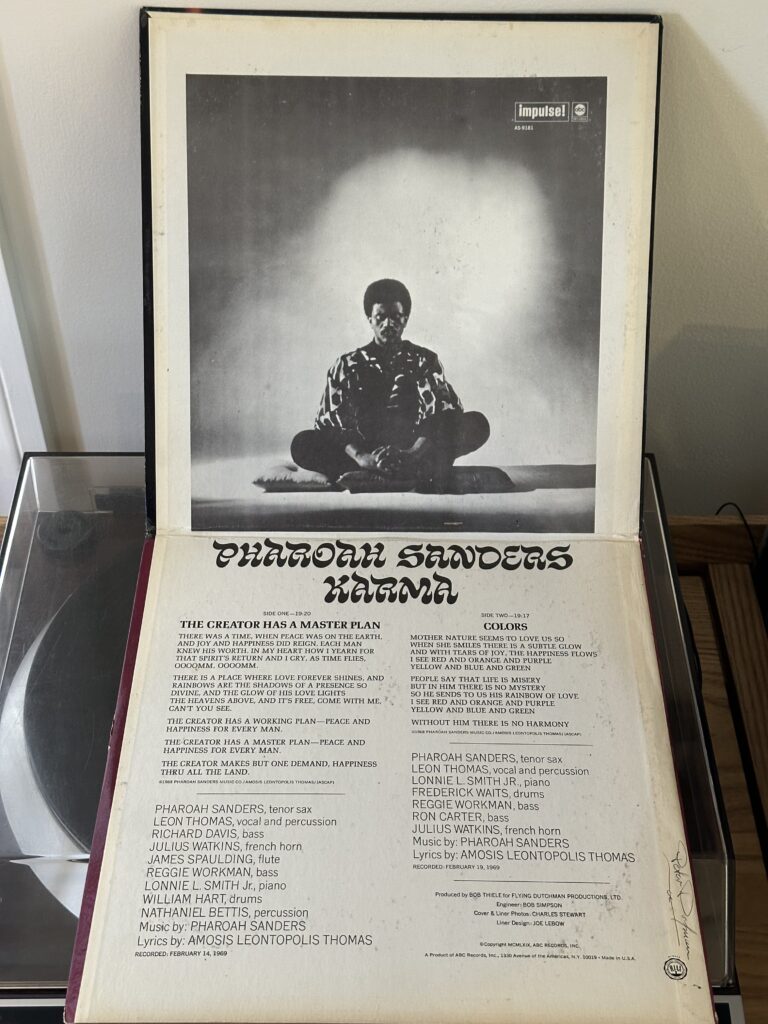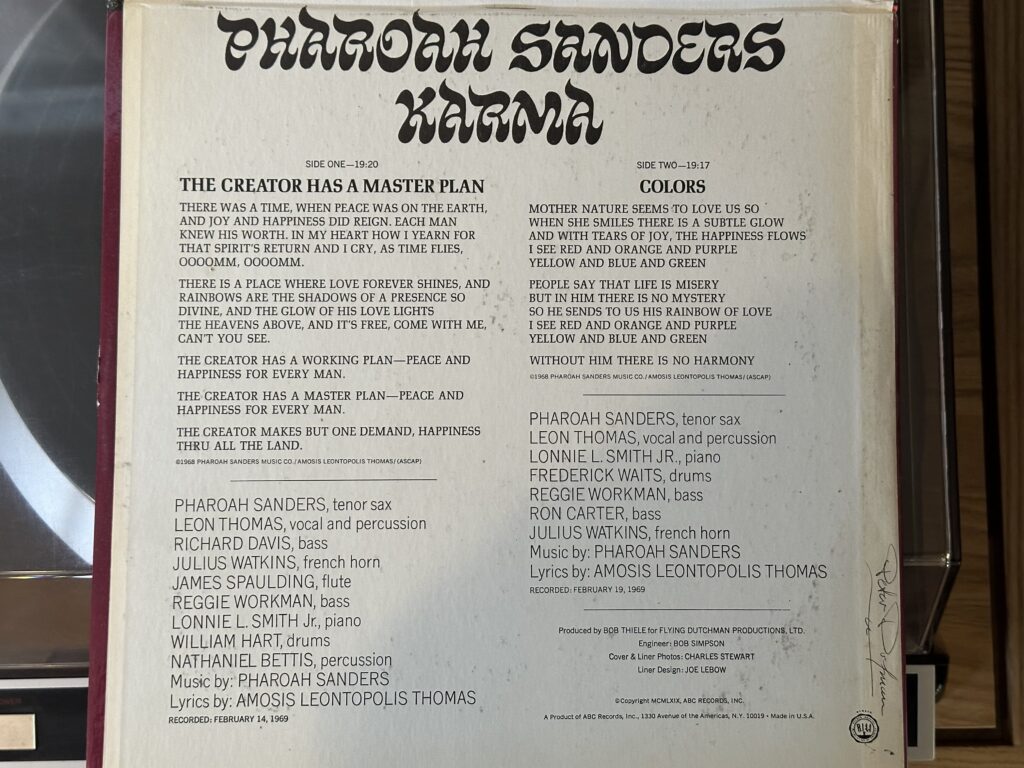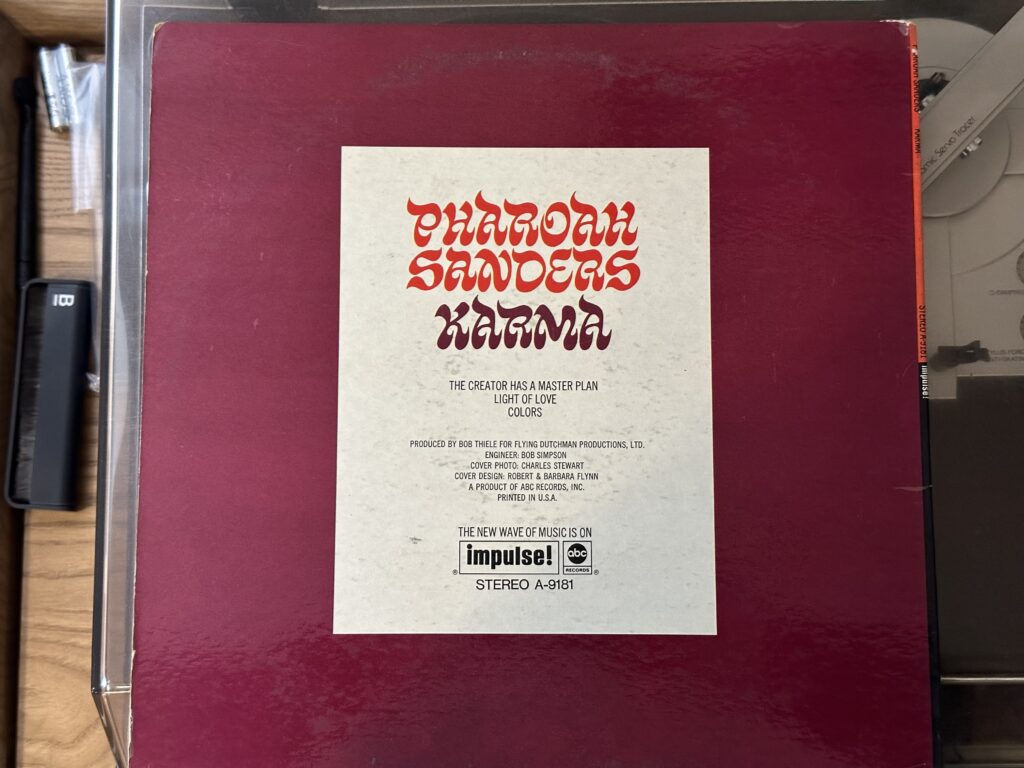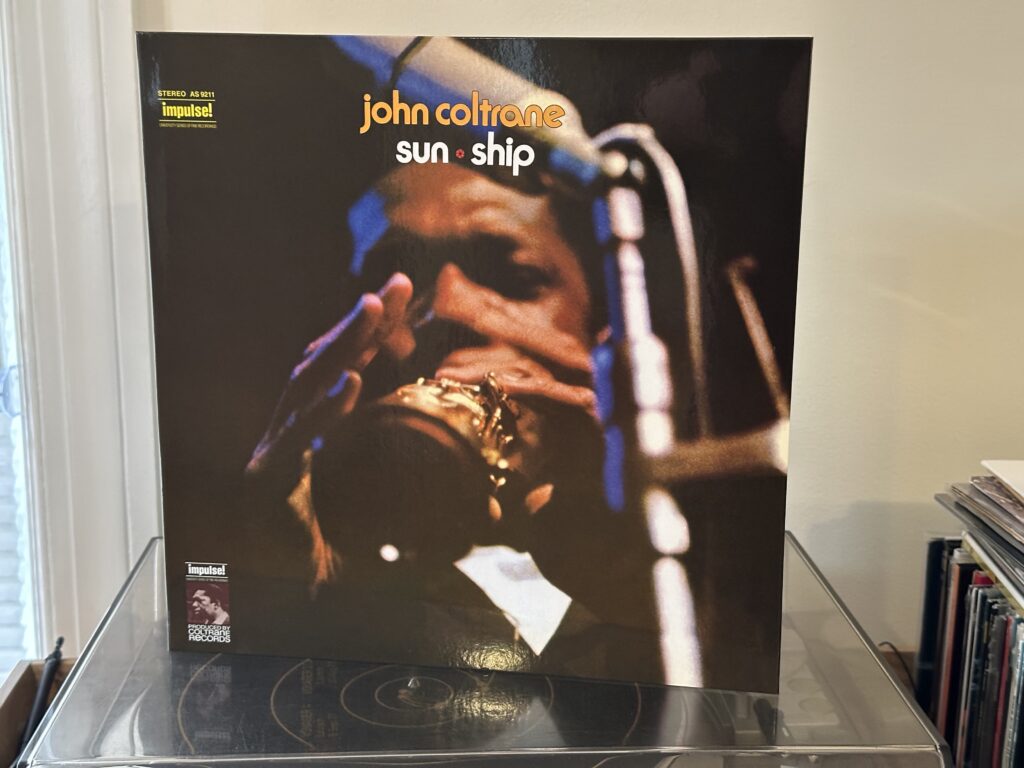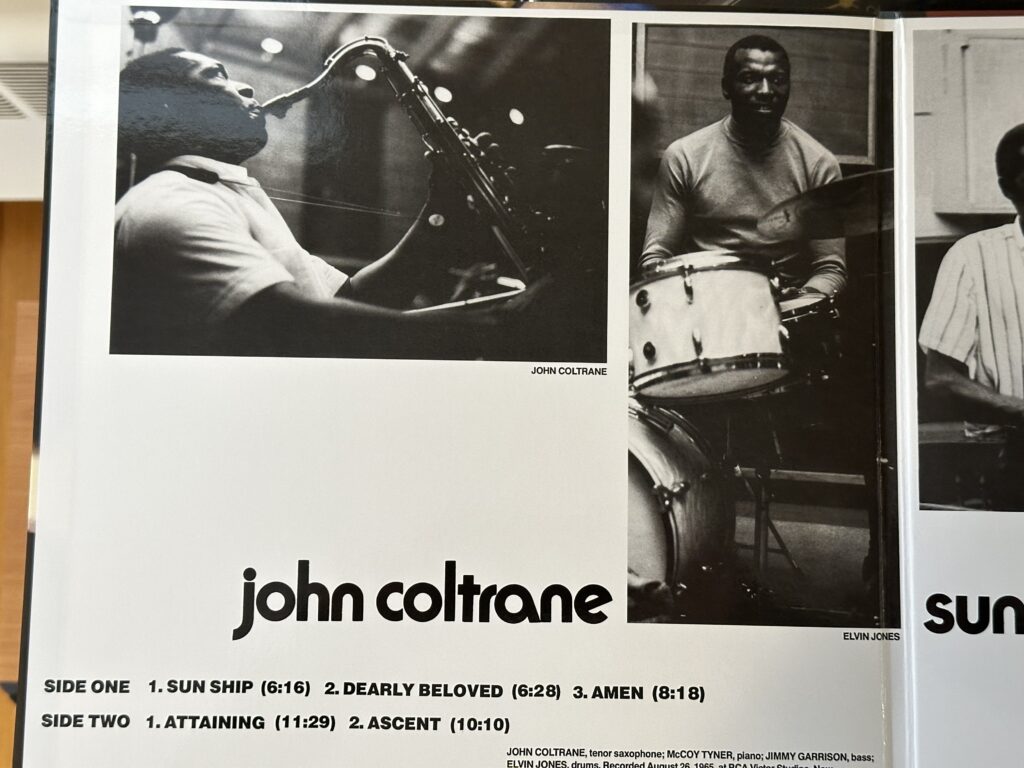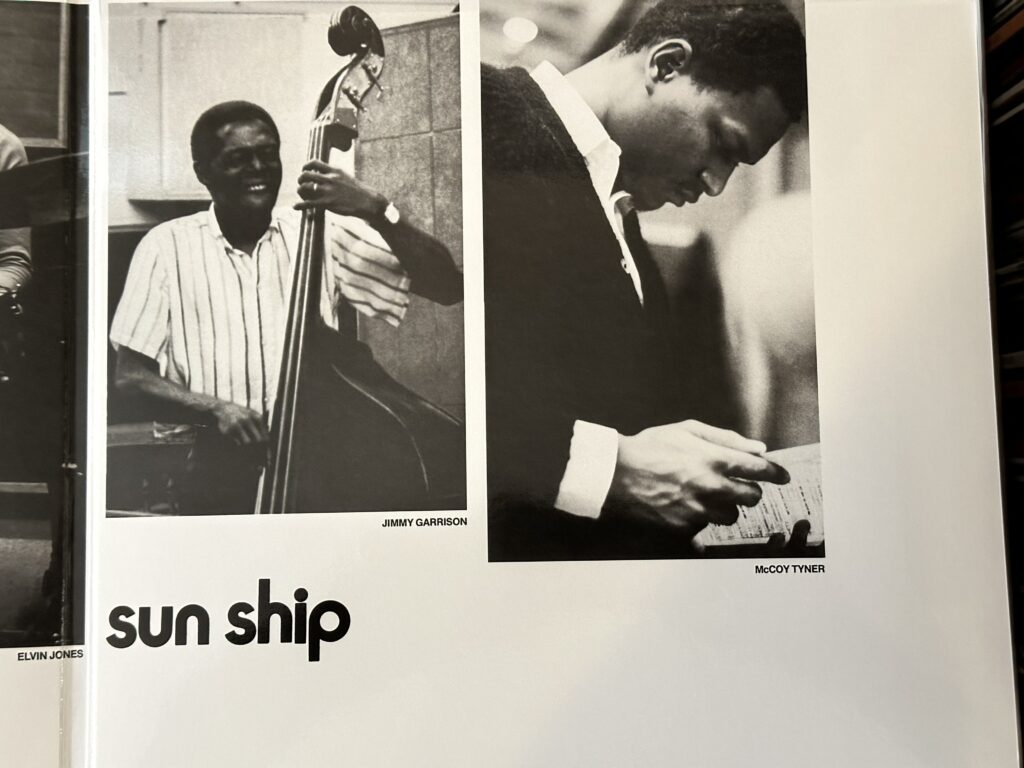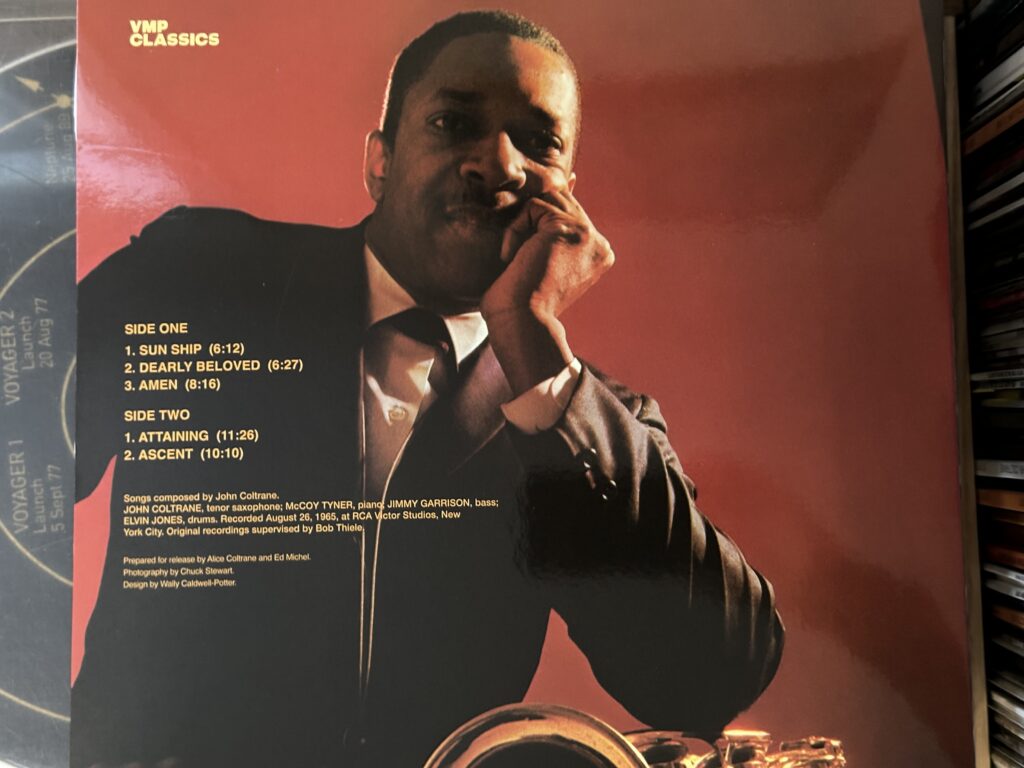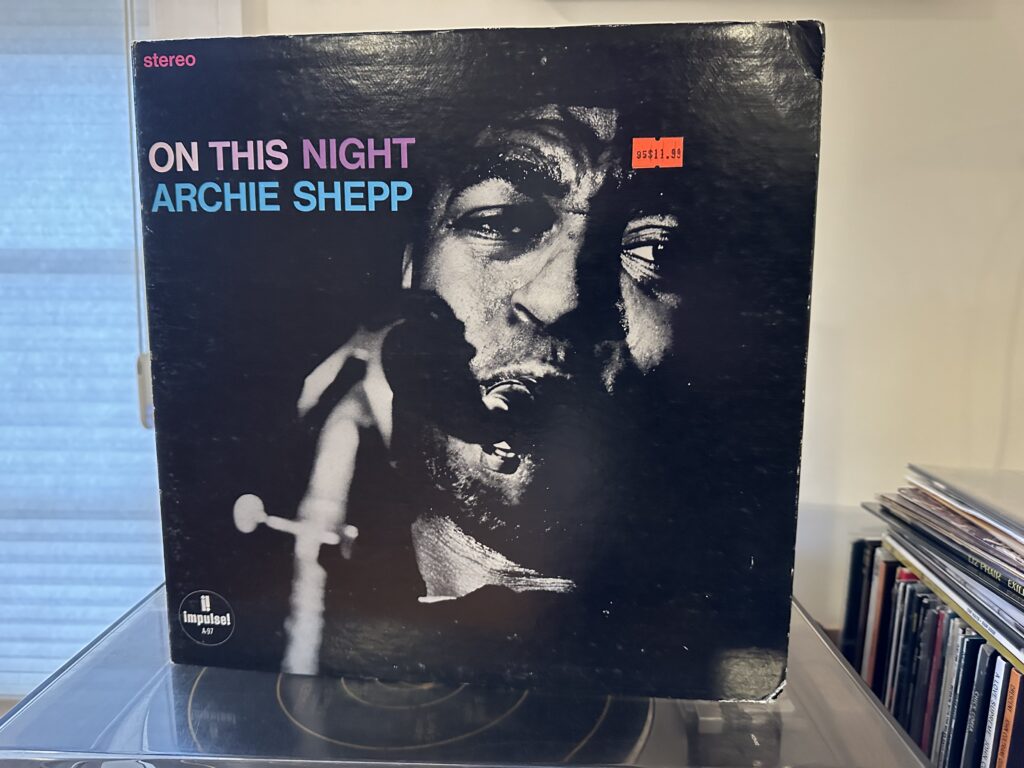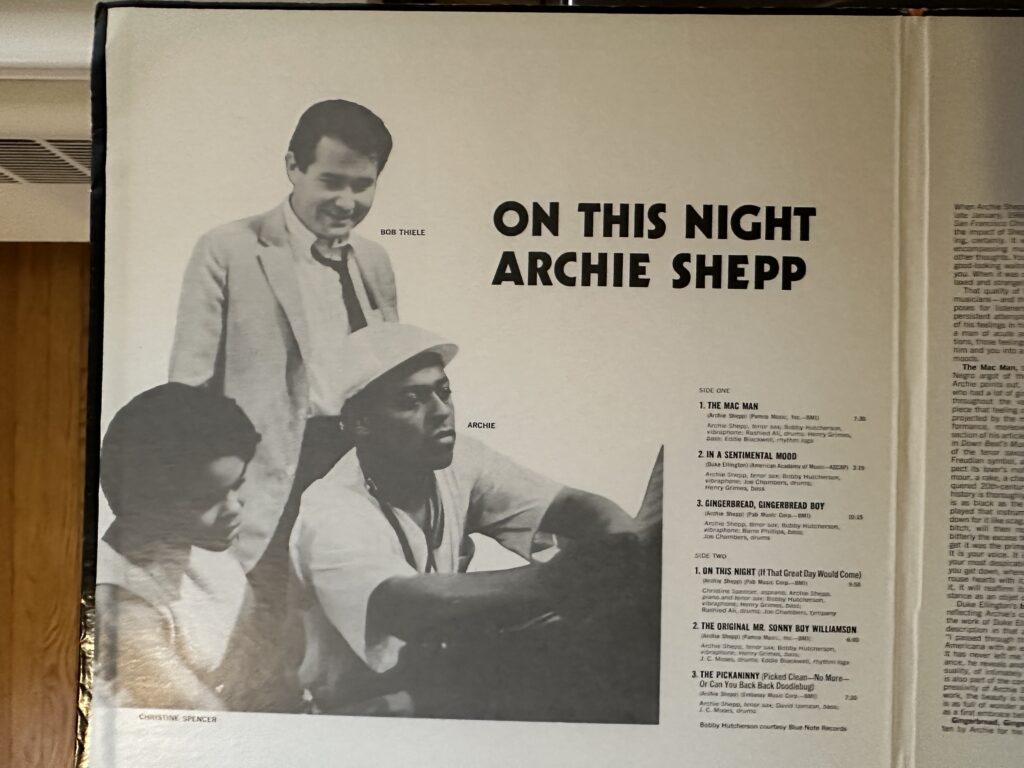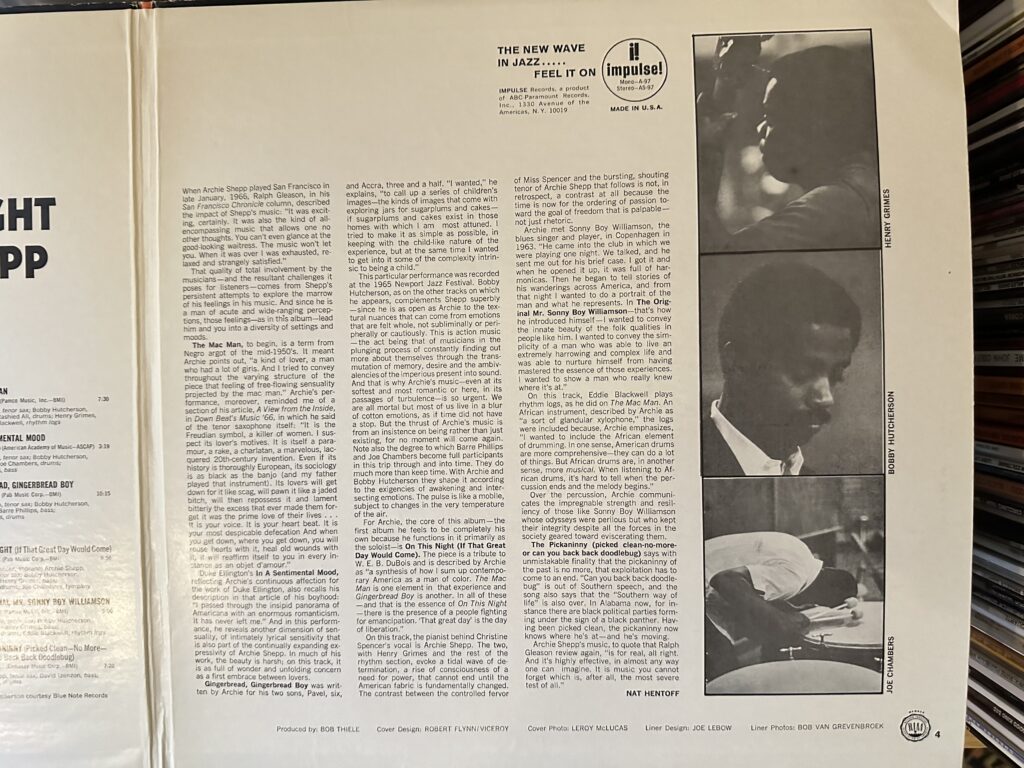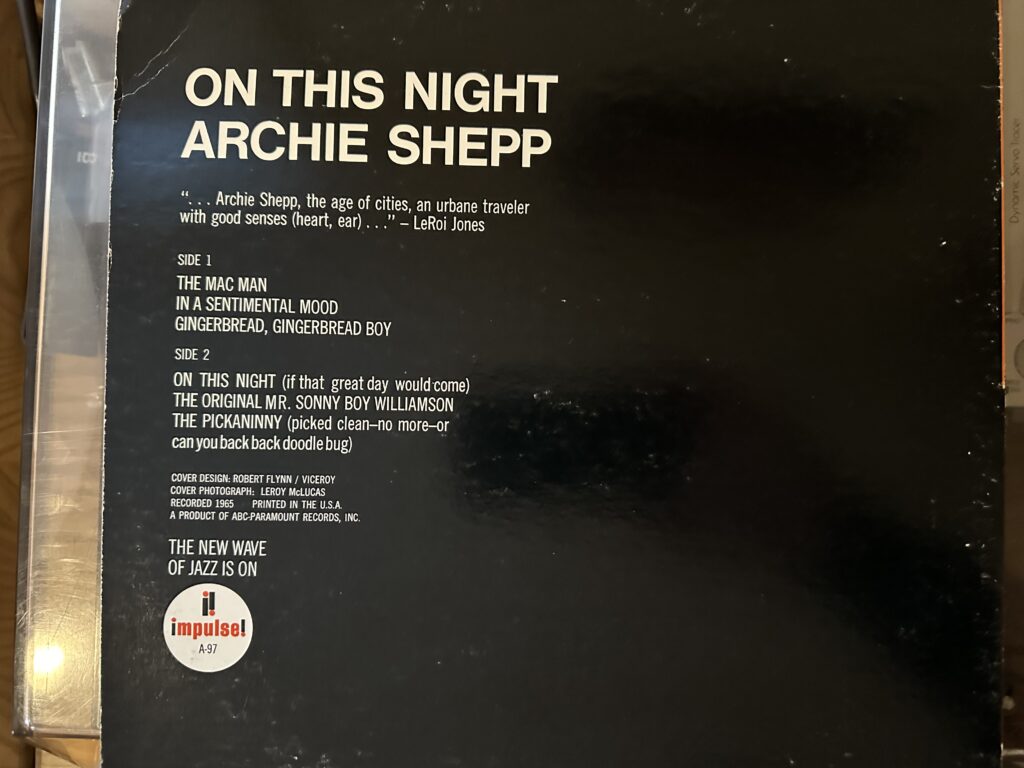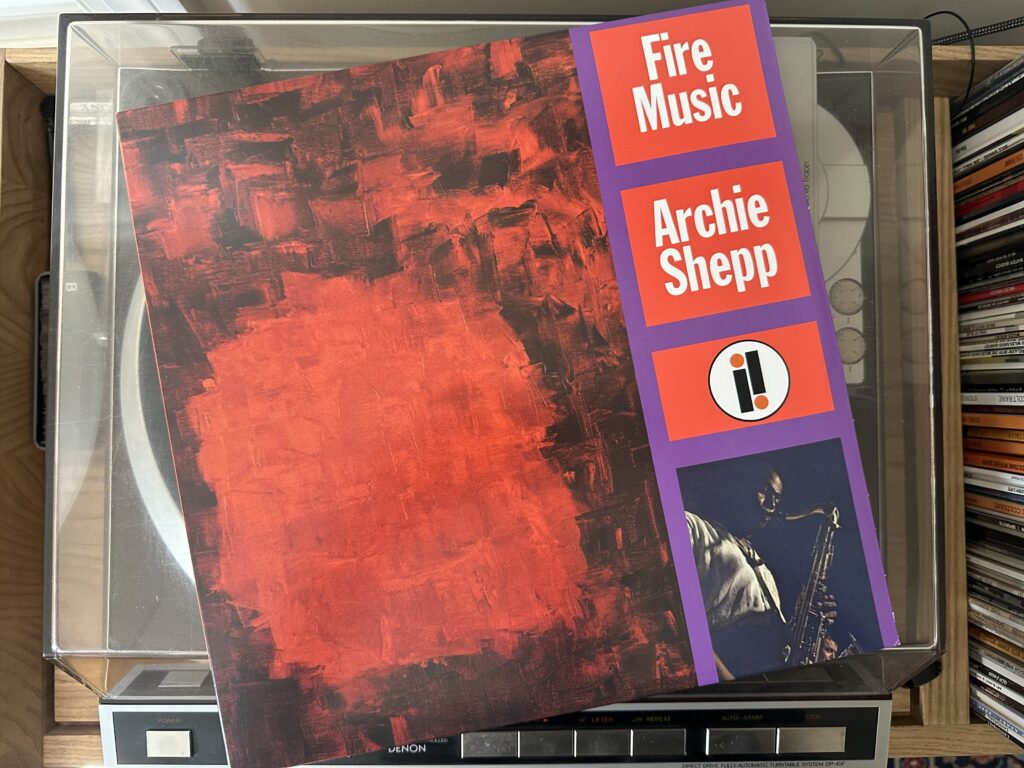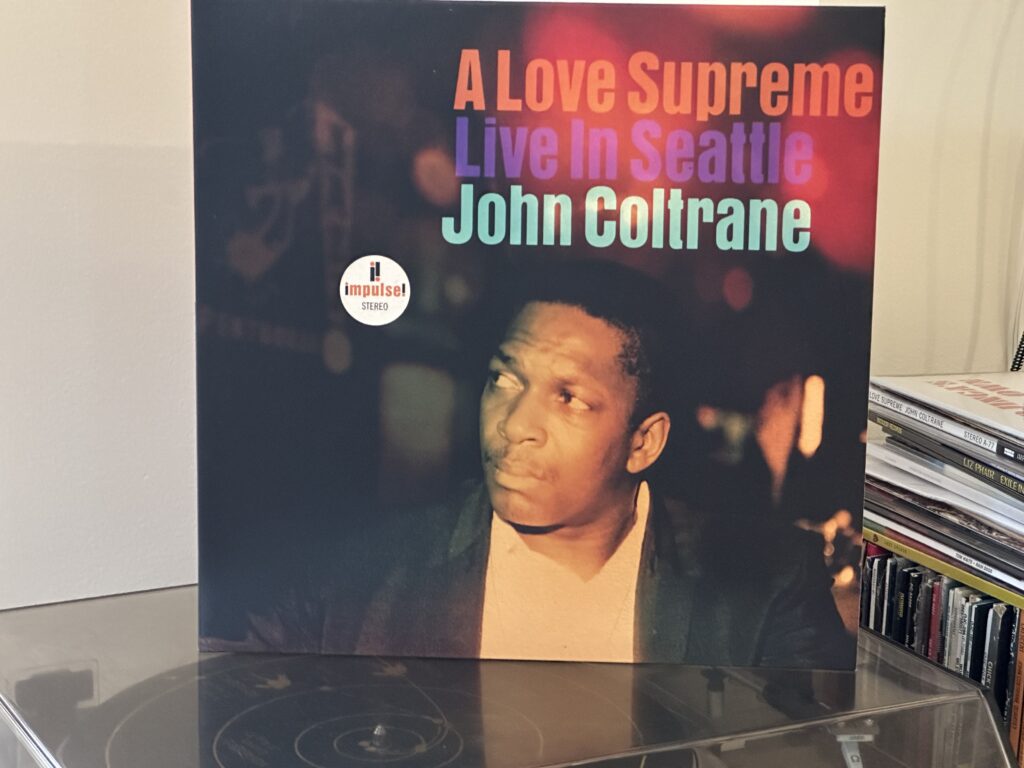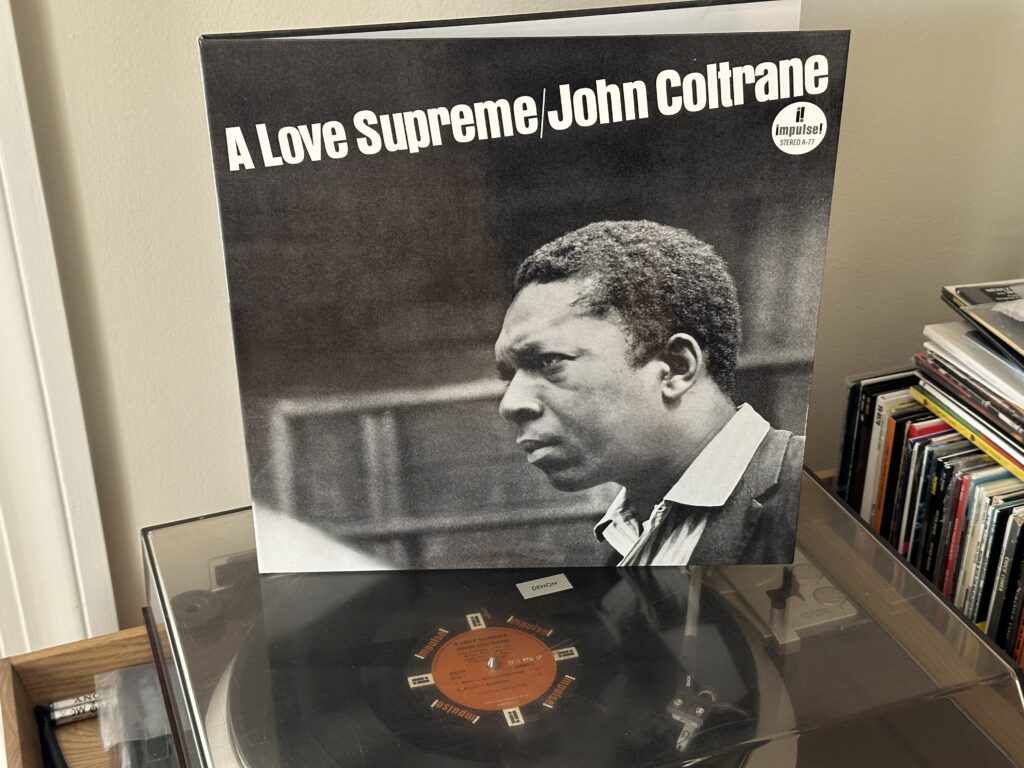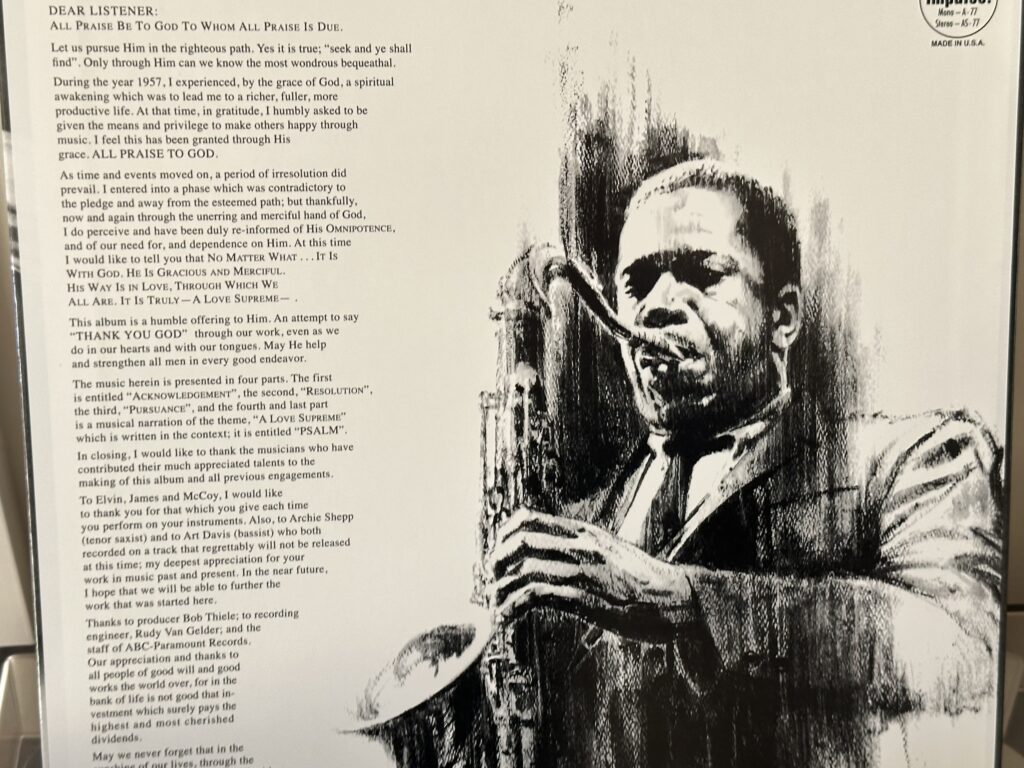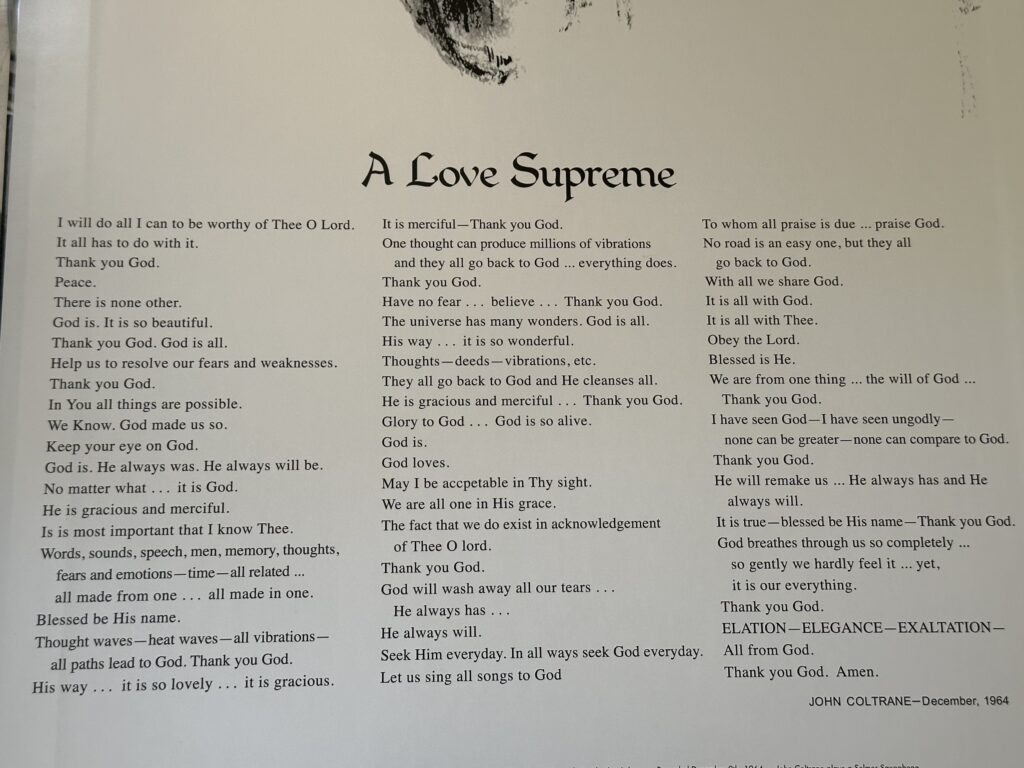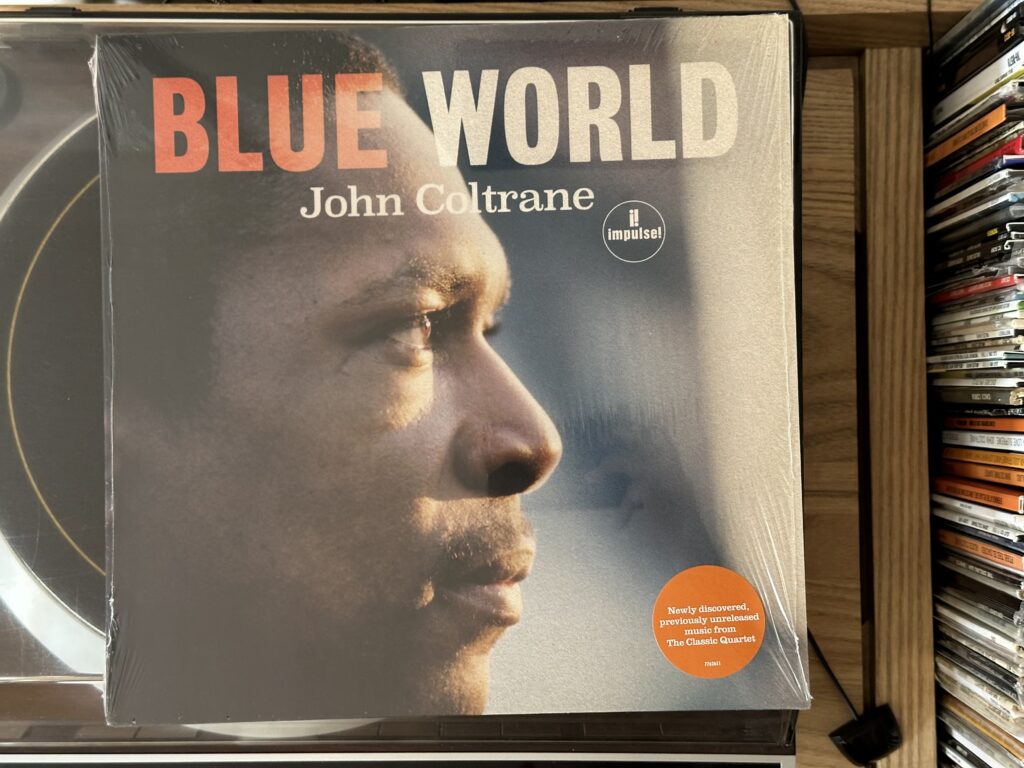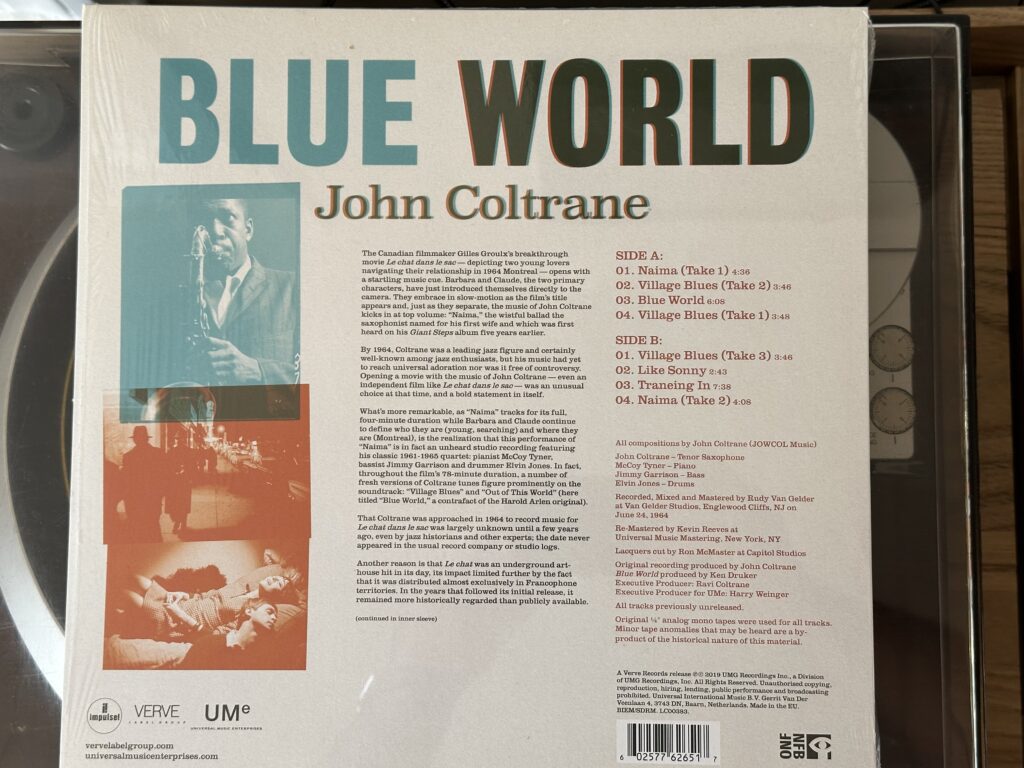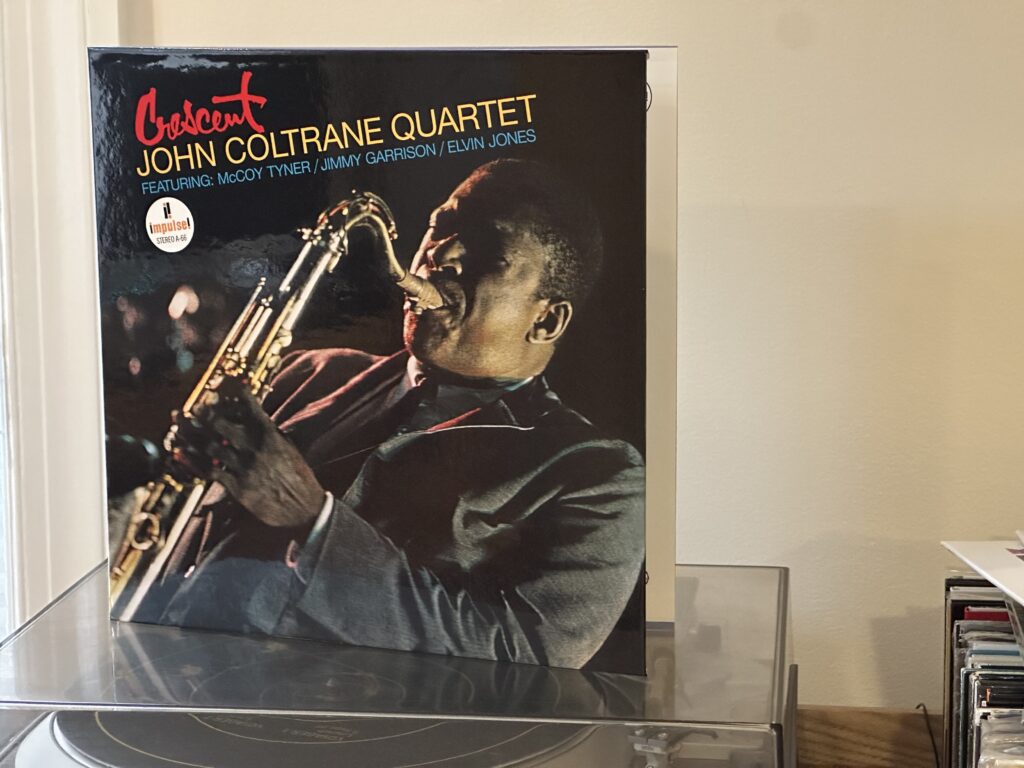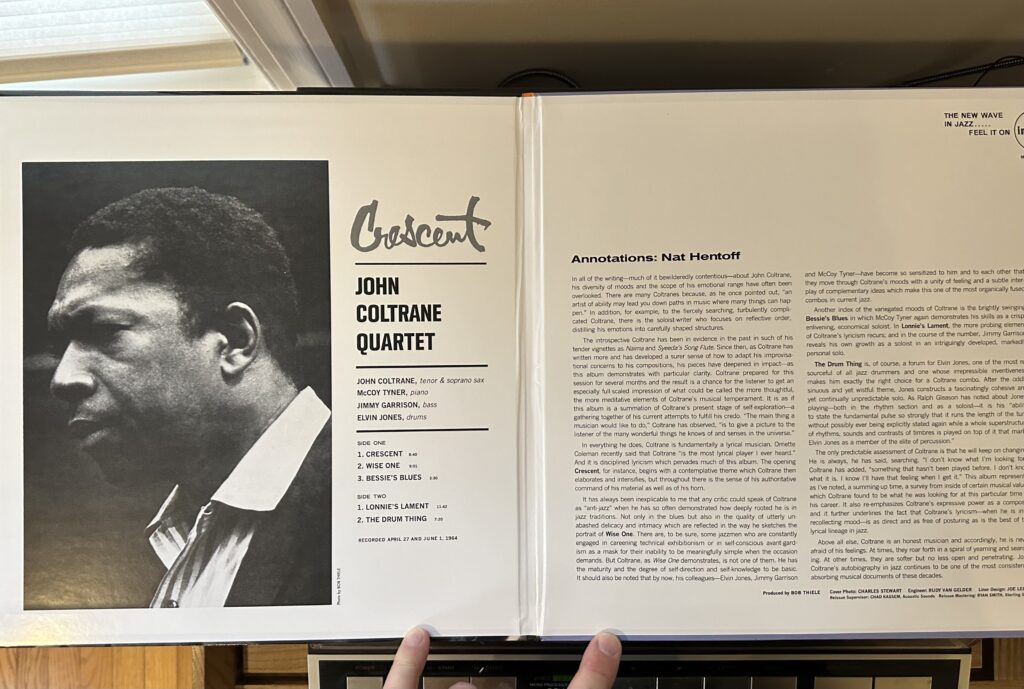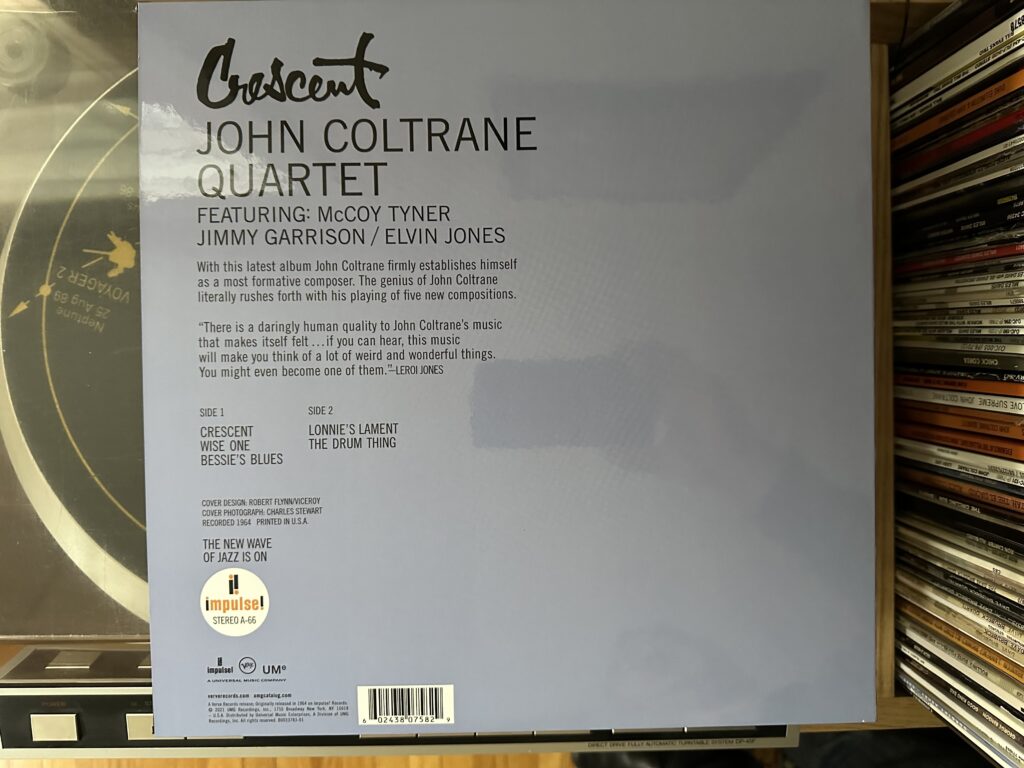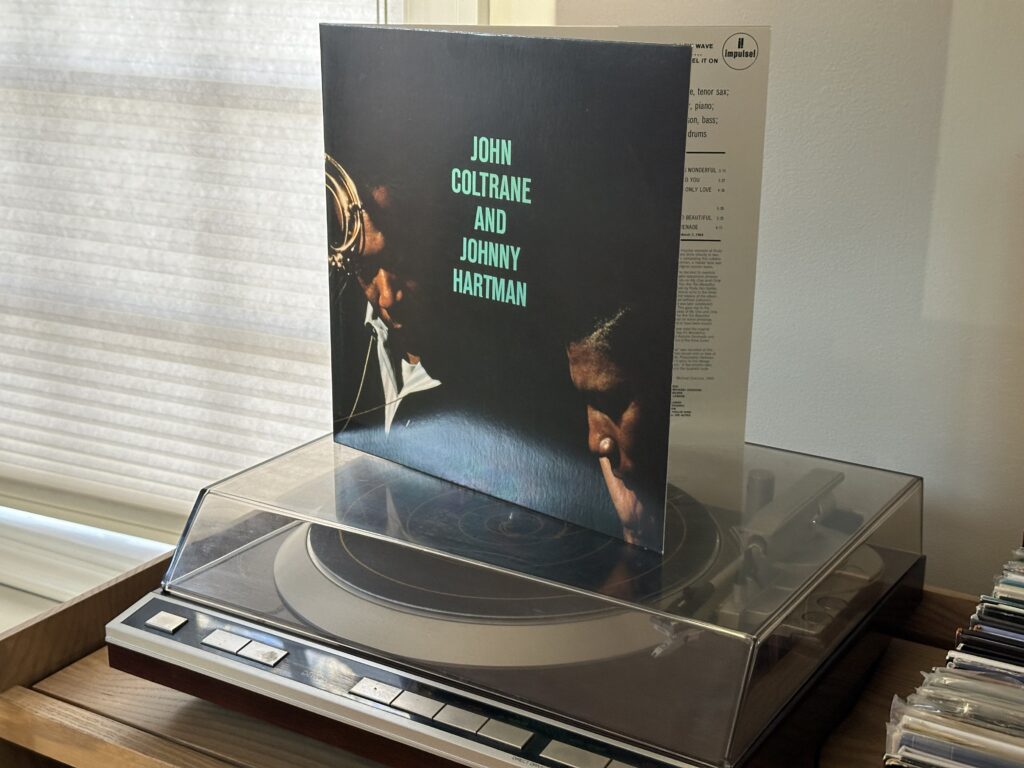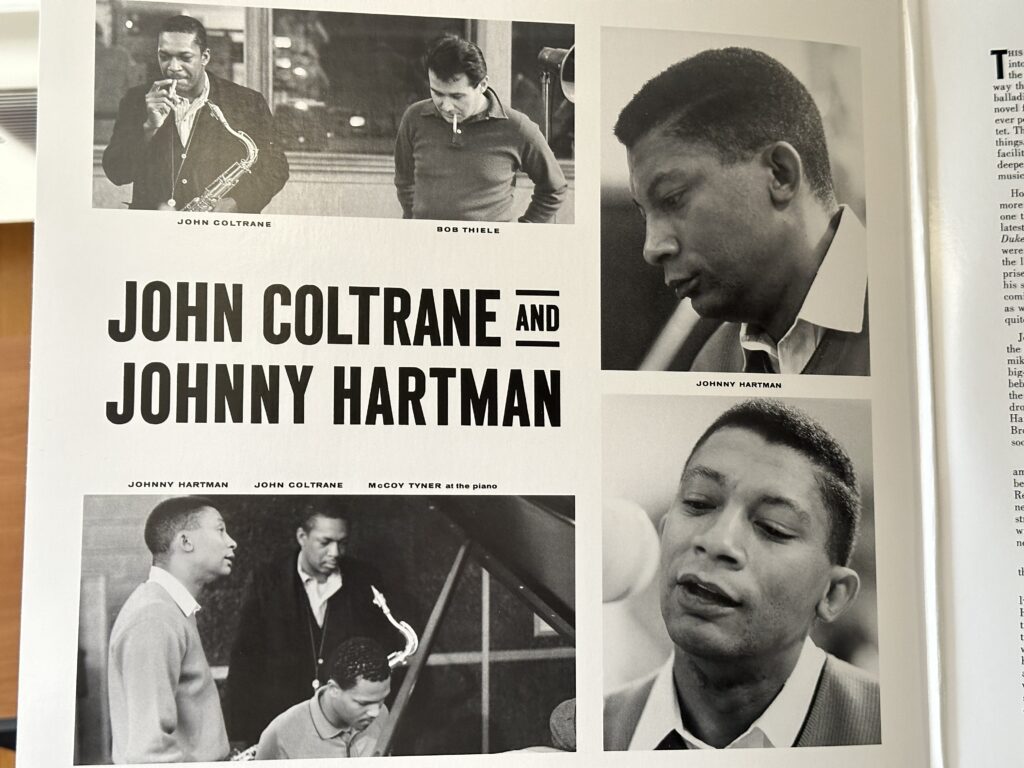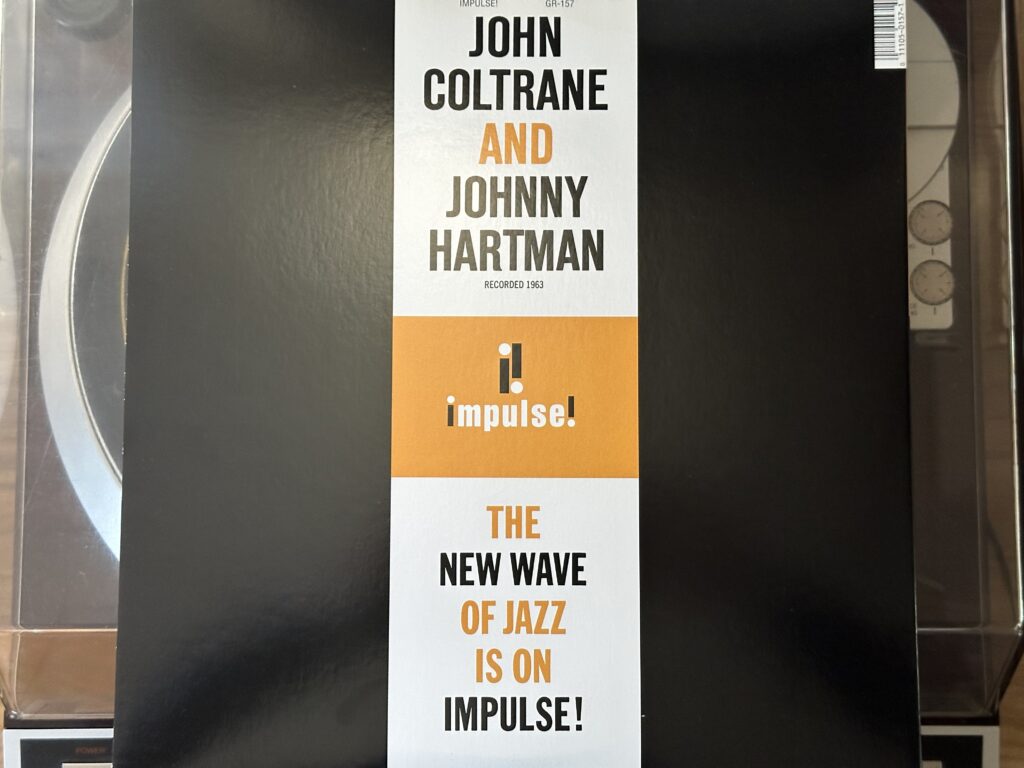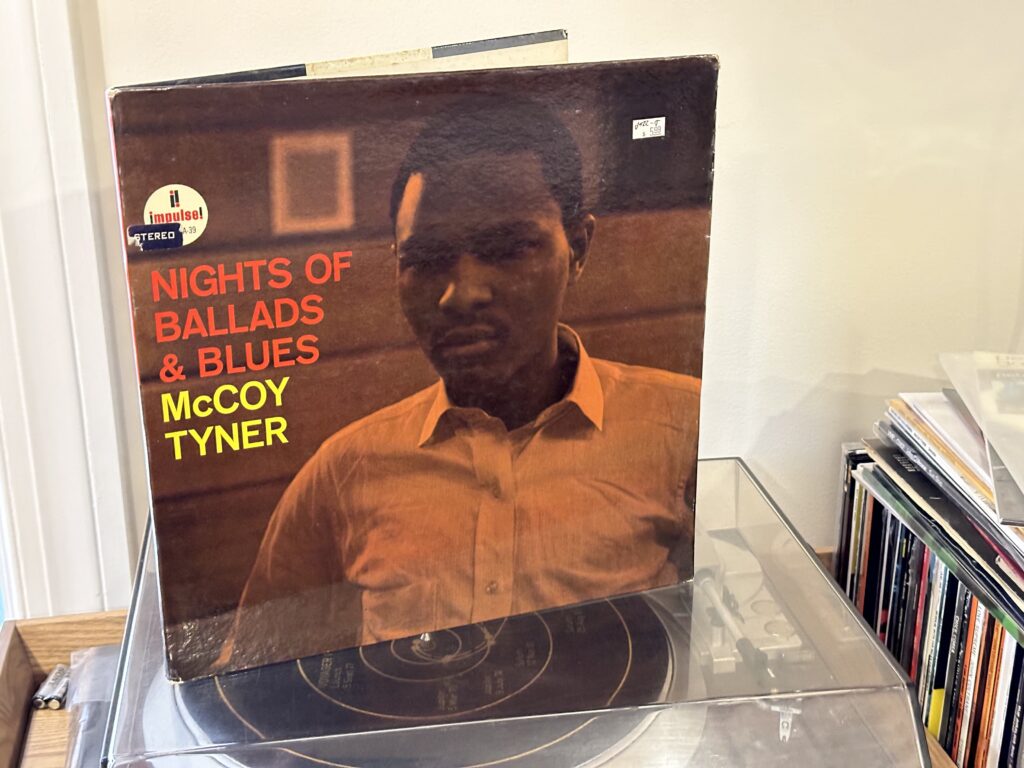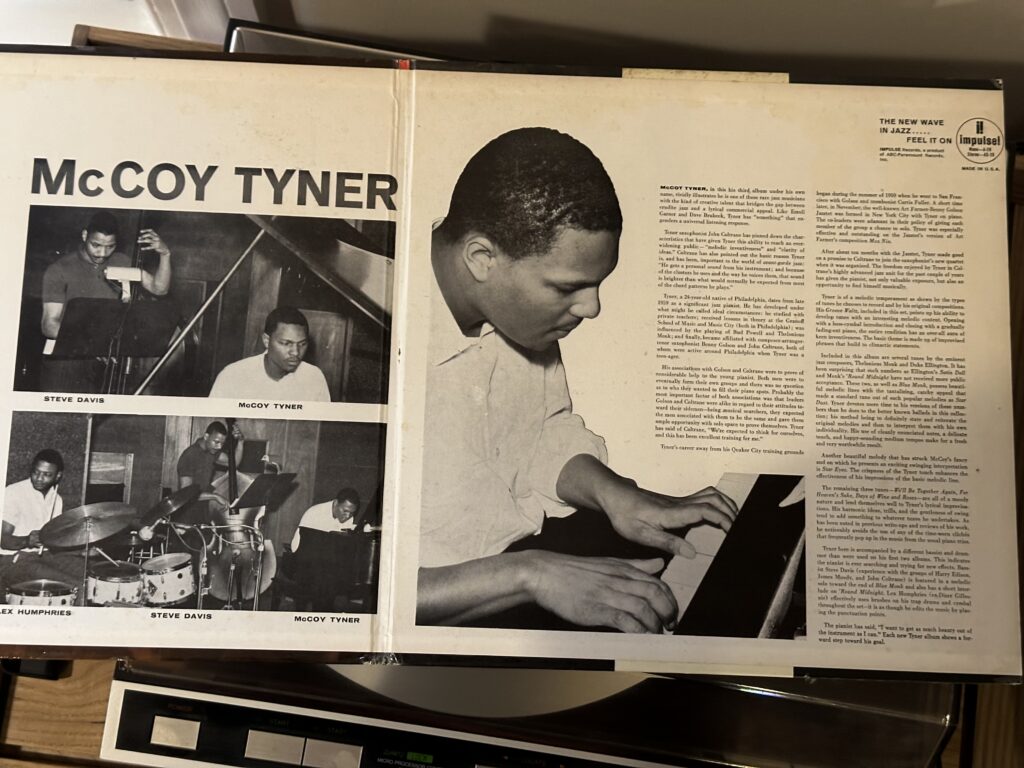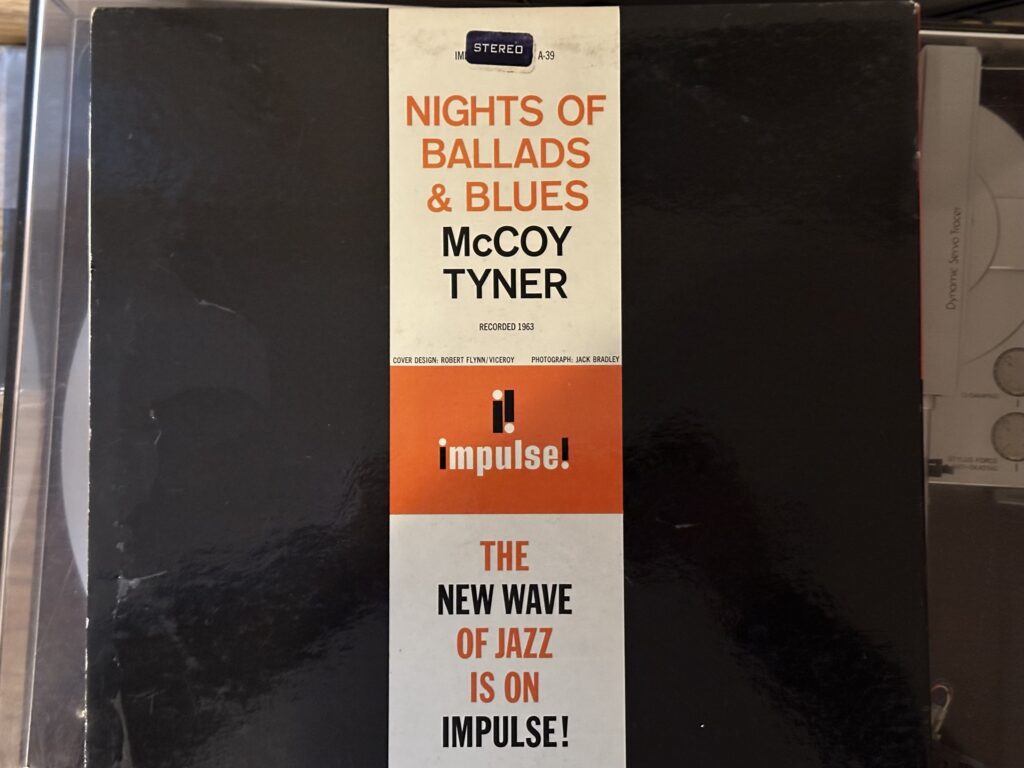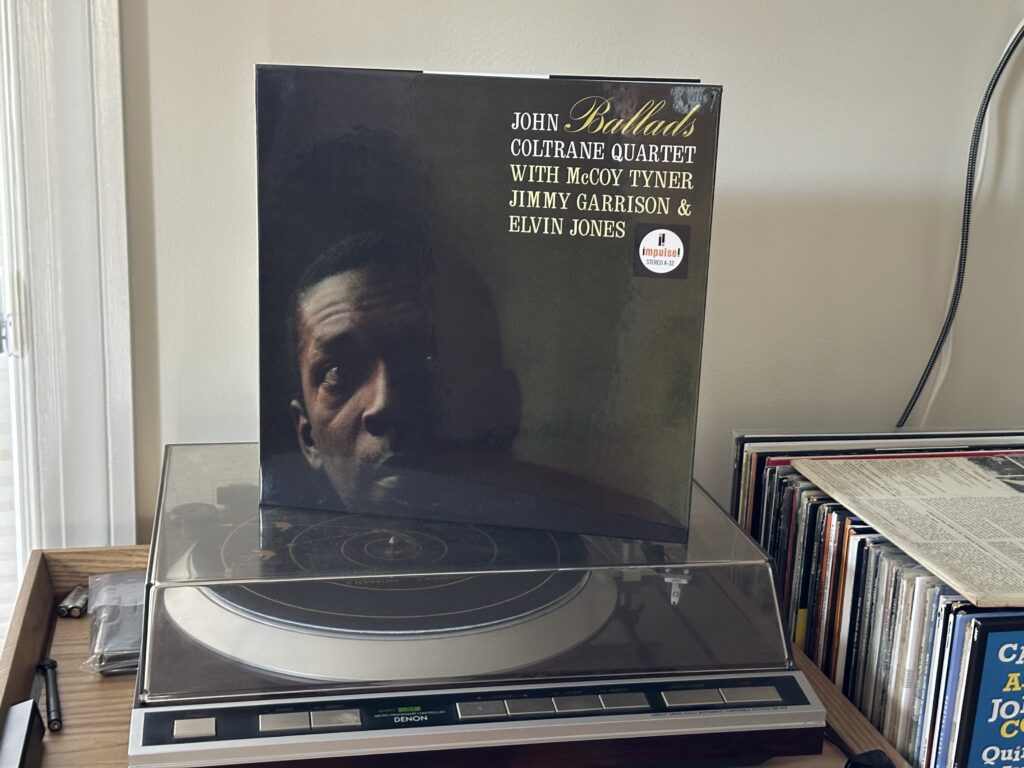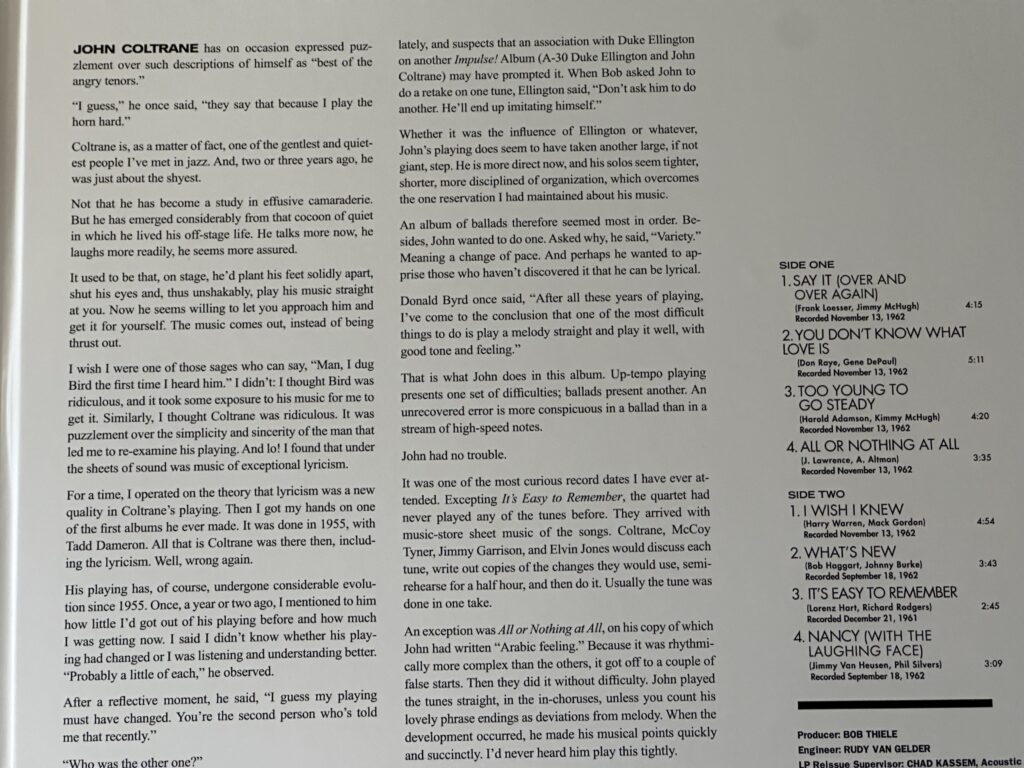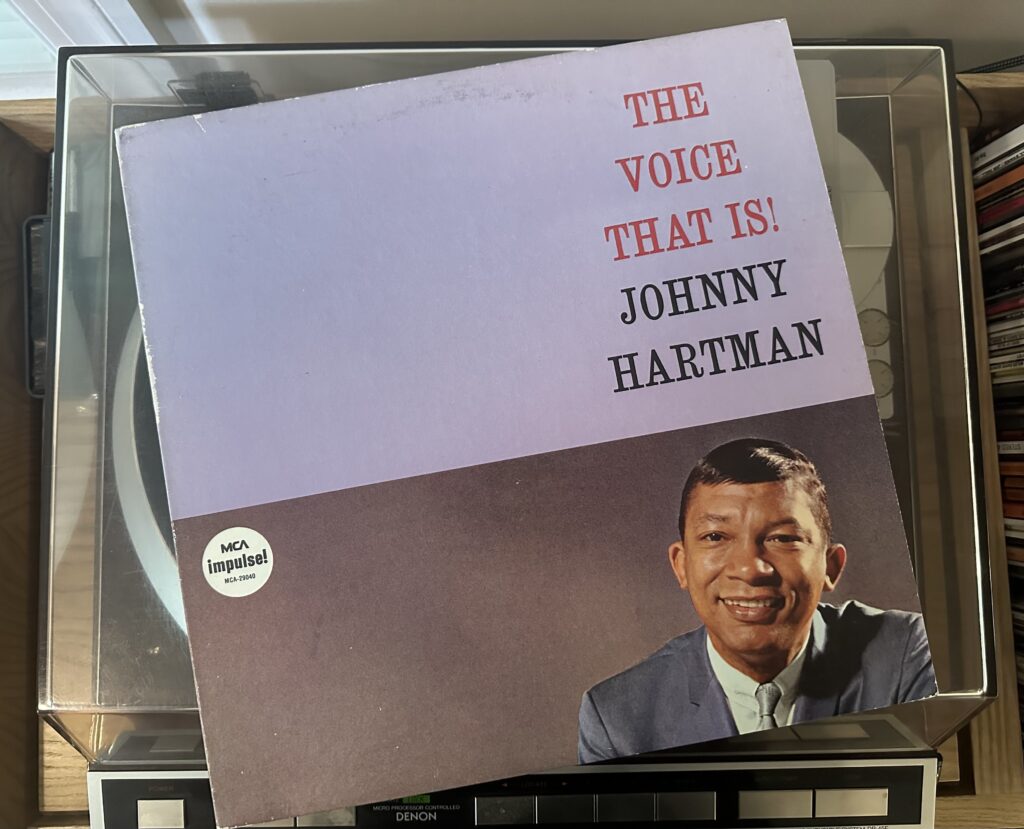
Album of the Week, June 15, 2024
Johnny Hartman, as we’ve discussed before, was essentially plucked from obscurity by John Coltrane in March of 1963 and catapulted to the next tier of jazz prominence—not exactly to stardom but at least much closer to being a household name. Among other effects on his life, the success of John Coltrane and Johnny Hartman got him a brief recording contract on Impulse! Records, this week’s album is the final entry in that series. Recorded in two separate sessions on September 22 and 24, 1964 at Van Gelder Studios in Englewood Cliffs, New Jersey, the sessions were backed by the Hank Jones quartet and by an octet arranged by Bob Hammer.
“The More I See You,” a Mack Gordon/Harry Warren song from the film Diamond Horseshoe and subsequently a jazz standard. is one of the quartet sessions. Hartman’s cheery, easy delivery is underscored by Hank Jones’ piano and the breezy guitar of Barry Galbraith. The performance stays mostly in Hartman’s mid-range, only occasionally dipping into the velvet end of the baritone that made his performances with Coltrane so memorable. But there’s still some signs of the distinctive performance style, especially his tendency to dip down into the low end of his range (rather than the high) to emphasize a musical idea on the last chorus.
The jacket calls the next track, an octet performance, “the first vocal interpretation” of “A Slow Hot Wind,” a Henry Mancini track with lyrics by Norman Gimbel. The track features a percussive idiophone part, originally performed on the lujon and here played on the marimba by Phil Kraus, and a vocal line anchored in that deep end where Hartman’s voice is so effective. The second chorus after the sax solo is brilliantly phrased: “There in the shade with a cool drink … waiting…”
Bart Howard, who authored the next track “Let Me Love You,” also wrote “Fly Me to the Moon,” and the walking bass intro shows it. This is Hartman in upbeat swinging mode, and it’s pleasant enough, but doesn’t show off his strengths nearly as well as the next track. “Funny World (the theme from Malamondo)” is an Ennio Morricone composition given a gentle exotic tinge by the octet, especially the maracas and other “Latin percussion” by Willie Rodriguez and by Howard Collins’ guitar. Hartman’s entrance reveals that the tune is actually in 6/8, and more surprises lie ahead, including a brilliant flute line from Dick Hafer and the brilliant dip down to the tonic in Hartman’s bridge as he sings “Funny thing, I should choose you.” This song was later performed by Astrud Gilberto, and it sounds at once idiomatically Brazilian and naturally Hartman in this performance.
I can’t listen to “These Foolish Things,” by Jack Strachey and Holt Marvell with Harry Link, without thinking of the perfume ad for “Nostalgia” in Alan Moore and Dave Gibbons’ The Watchmen, thanks to the lyric “Silk stockings thrown aside/Dance invitations/Oh how the ghost of you clings.” But that’s not the most jaw-dropping lyrical moment in the song; that would have to be: “You came/You saw/You conquered me… When you did that to me/I knew somehow this had to be/The winds of march that made my heart a dancer/A telephone that rings but who’s to answer…” It’s a brilliant ballad performance by Hartman throughout, with sensitive timing and that brilliant voice.
“My Ship,” by Kurt Weill with lyrics by Ira Gershwin from the musical Lady in the Dark, is another great ballad given greater scope by Hartman’s lyric timing. When he sings “the sun sits high/in a sapphire sky,” it’s a perfect word painting. He starts “the sun” a fourth below the tonic, comes up a whole step, and then jumps an octave on “sits high” but is still in his upper middle range thanks to that low start. He never uncorks his high range until the end: “If the ship I sing/Doesn’t also bring/My own true love to me.”
“The Day The World Stopped Turning,” by Buddy Kaye and Phillip Springer, is more richly orchestrated, with a flute part that seems to flutter out of tune for a half a measure until the rest of the arrangement shows that the whole band is shifting through key changes with every measure. The gentle Latin flavor is here in spades, but the song comes and goes quickly. The Frank Loesser standard “Joey, Joey, Joey,” by contrast, is given a one minute intro by just Hartman and Rodriguez, the former singing through the verse phrase by phrase and receiving answers from Rodriguez’s percussion. When the chorus comes, Hartman shifts into a slow samba, then back into the free unaccompanied rhythm of the second verse.
“Sunrise, Sunset” is surely one of the better-known (and newest) standards in this collection. Written by Sheldon Harnick and Jerry Bock for Fiddler on the Roof, the song here opens with guitar alone accompanying Hartman on the verse. Hartman unsurprisingly finds new depths of pathos even in this saddest of the songs from the musical; his reading of “When did he grow to be … so tall” wrecks me. On the verse the rest of the band is subtle, with careful addition of marimba and bass to the guitar so as to not crowd the great voice. It’s a devastating performance.
“Waltz for Debby,” the Bill Evans classic here given lyrics by Evans’ friend Gene Lees, continues the theme of childhood in a somewhat happier though still nostalgic vein. His line “they will miss her I know/but then so will I” is given more bounce and less poignancy by the drums of Osie Johnson, who seems to skitter and bounce along the outlines of the great tune.
Hartman closes the album with “It Never Entered My Mind,” the Rodgers and Hart classic from Higher and Higher. It’s a bluesy ballad written for Hartman’s strengths with the dip down below the tonic on “If you scorn me/I’ll sing a loser’s prayer again.” His time-stopping cadenza on the closing “It never entered my mind” is breathtaking. I find myself flipping the record (or, honestly, just replaying the album on Apple Music) to hear it all again.
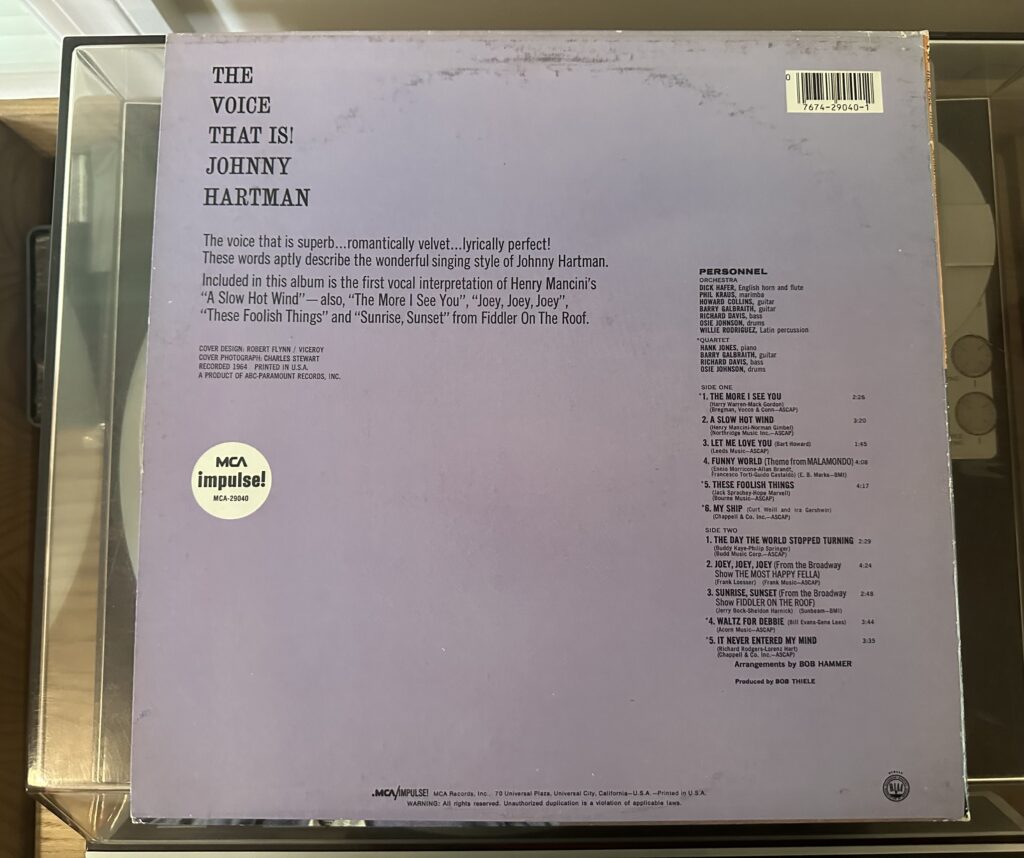
After this album, the singer moved to Impulse’s parent label, ABC-Paramount, to try to reach a wider audience. He was dropped after his second album for ABC in 1967 flopped, and recorded albums for several smaller labels in the following decade-plus. Next week we’ll listen to a studio recording from the end of his career.
You can listen to this week’s album here:

